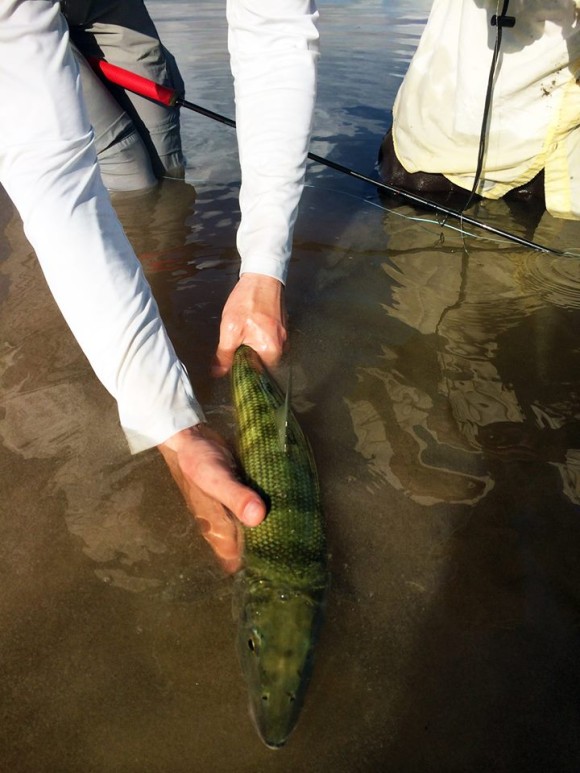I recently shared a picture from a Redington trip to Mexico that showed a nice Mexican bonefish. Someone remarked that they were amazed how dark the fish was. It was dark (below), but that same fish, feeding in a different part of its habitat almost certainly would have been lighter in color.

A dark backed bone.
You see, bonefish can, and do, change color depending on their surroundings. They can’t pull a flounder on you and change their coloration to mimic precise shades of the bottom, but they can alter their color to better blend.
Bonefish have chromatophores which they use to control the pigment. That pigment can be concentrated to bring out those dark vertical bands on their backs and make the whole fish look green when feeding over grass. The bonefish can disperse pigment when feeding over white sand, making the silver fox look, well, silver, almost totally colorless.
The fish below was caught over white sand in Andros and, as you can see, it doesn’t have much color. It was blending in nicely.

Nice bone, tagged and ready to go. Photo by Cameron Miller.
They can’t do this instantly, however, which is why my favorite kind of bonefish is the bonefish moving in between dark and light bottoms. That dark backed bonefish stands out pretty nicely over a white bottom.
So, it isn’t that there are light populations and dark populations so much as there are bonefish, capable of adapting to whatever environment they happen to find their food in.
To understand more about the physiology of bonefish, I strongly recommend Fly-Fishing for Bonefish by Chico Fernandez. Dr. Aaron Adams handles the biology and does a pretty fine job of it.

